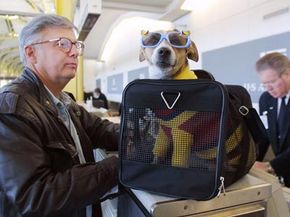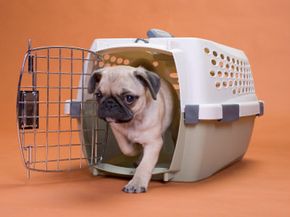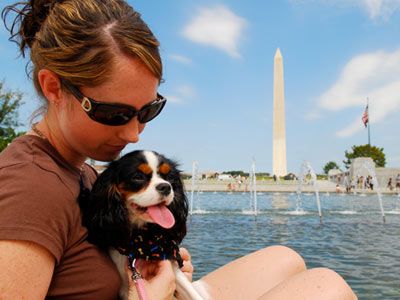It may seem like you need college degrees in business management, calculus and quantum mechanics (along with a keen interest in astrology) to figure out how airlines set prices for plane tickets. A ticket from one city to another might vary hundreds of dollars from one day to the next, and for no apparent reason. On top of that, most airlines have several classes of tickets that can affect the price -- even if you are only looking at the coach section of the plane.
But pet tickets are a little less perplexing. In most cases, a pet ticket is a flat fee, though a few airlines do have a sliding scale based on the animal's weight for pets traveling in the cargo section. But unlike tickets for humans, pet tickets remain consistent until the respective airline decides to make a company-wide change to the fee.
Advertisement
Not all airlines allow pets on planes. Others only allow pets in the cabin section -- the part of the plane with the passenger seats -- and a few airlines only allow pets in the cargo or baggage section of the plane.
In the United States, airlines that allow pets on planes have to follow strict federal guidelines. The Federal Aviation Administration (FAA) follows standards set by the Animal Welfare Act. Traveling pets have to meet the following requirements:
- Dogs and cats must be at least eight weeks old.
- Dogs and cats must have been weaned for at least five days.
- Shipping containers must meet specific standards in regards to weight, size, strength, ventilation and sanitation.
- Dogs and cats can't be dropped off more than four hours before the plane's departure unless the owner makes shipping arrangements in advance.
- Animals can't be exposed to temperatures lower than 45 degrees Fahrenheit (7.2 degrees Celsius) without veterinarian approval.
The FAA requires all pets transported within airplane cabins to be in a container that can fit beneath a passenger seat just like any other piece of carry-on luggage. Beyond that, the FAA allows airlines to set standards regarding in-cabin transportation.
One thing to keep in mind is that airlines do not consider service animals to be pets. Some airlines won't charge passengers with disabilities for the animal's transportation, though most require documentation proving the animal's service status. Many airlines allow service animals to ride in the plane's cabin even if the animals are too large to fit underneath a seat.
In the next section, we'll look at the difference between pet tickets for in-cabin flight versus the plane's cargo hold.
Advertisement



